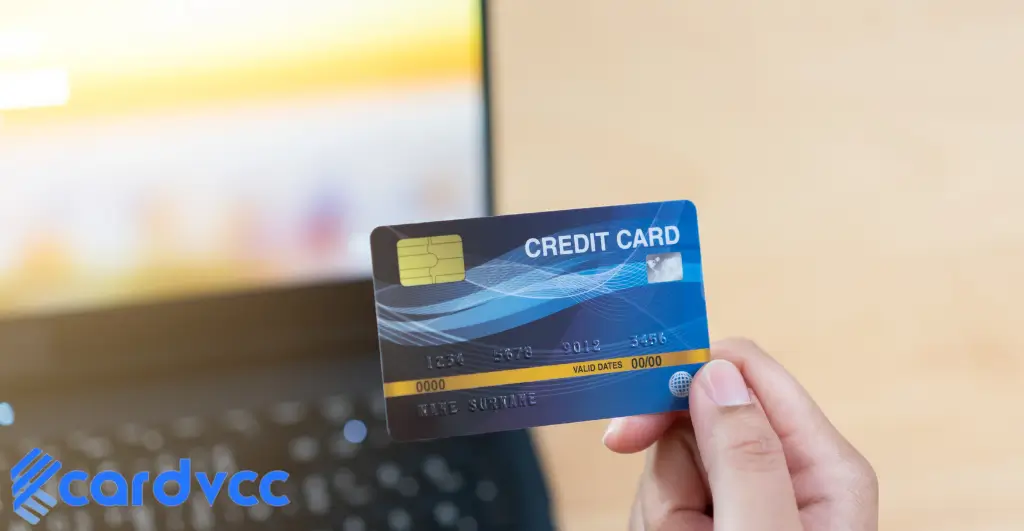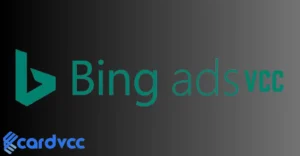You get charged interest on a credit card if you carry a balance past the due date. Paying the full balance each month avoids interest charges.

Credit cards provide convenience and flexibility, but understanding interest charges is crucial. Interest accumulates on unpaid balances, leading to higher costs over time. To avoid these charges, pay your statement balance in full by the due date. This practice not only saves money but also helps in maintaining a good credit score.
Credit card interest rates can be high, so it’s essential to manage your spending and payments wisely. By staying informed and disciplined, you can make the most of your credit card without falling into debt traps. Always read your credit card terms to understand how interest is calculated.
Interest-free Period
The interest-free period on a credit card is a time when no interest is charged on purchases. Understanding this period can help you avoid unnecessary fees. This section will explain the grace period and its exceptions.
Grace Period Explained
The grace period is the time between the end of your billing cycle and the payment due date. During this period, you won’t be charged interest on new purchases, as long as you pay your balance in full by the due date.
Most credit cards offer a grace period of about 21 to 25 days. To maximize this benefit, always pay your full balance before the due date. This will help you avoid interest charges and keep your credit in good standing.
Exceptions To the Grace Period
Not all transactions qualify for the grace period. Here are some exceptions:
- Cash Advances: Interest starts accruing immediately on cash advances.
- Balance Transfers: Balance transfers may not have a grace period and can attract immediate interest.
- Partial Payments: If you only make a partial payment, the grace period is void. Interest will accrue on the remaining balance.
Check your credit card’s terms and conditions for specifics on these exceptions. Understanding these details can help you avoid unexpected interest charges.
Types Of Credit Card Interest
Understanding the types of credit card interest can help you save money. Different transactions may have different interest rates. Here are the main types to know about.
Purchase Apr
Purchase APR is the interest rate for regular purchases. This rate applies to items you buy with your credit card. If you pay your balance in full each month, you avoid this interest. Otherwise, it starts accruing after the grace period.
Cash Advance Apr
The Cash Advance APR is higher than the purchase APR. This rate applies when you withdraw cash using your credit card. Interest starts accruing immediately, with no grace period. It’s best to avoid cash advances when possible.
Balance Transfer Apr
Balance Transfer APR is the rate for moving debt from one card to another. This can be lower than other APRs, especially during promotional periods. Check if there is a balance transfer fee before deciding.
| Type of APR | Description | Interest Starts |
|---|---|---|
| Purchase APR | For regular purchases | After grace period |
| Cash Advance APR | For cash withdrawals | Immediately |
| Balance Transfer APR | For transferring balances | Varies |
When Interest Starts
Credit cards are convenient but come with interest charges. Knowing when interest starts helps manage debt. Below are details on when interest starts for different types of transactions.
Purchases
Interest on purchases begins if the balance is not paid in full. Typically, you have a grace period of 21-25 days. Pay the full balance within this period to avoid interest. If not, interest is charged from the date of purchase.
Cash Advances
Cash advances incur interest immediately. There is no grace period. Interest starts from the day you take out the cash. Additionally, cash advances often have higher interest rates. It’s best to avoid using your credit card for cash advances.
Balance Transfers
Interest on balance transfers depends on the terms of the transfer. Some cards offer 0% interest for a limited time. After this period, normal interest rates apply. Check your card’s terms to know when interest starts on transferred balances.
Avoiding Interest Charges
Credit card interest can be a big expense. But, you can avoid it. Learn how to keep your money in your pocket. Here’s how you can avoid interest charges on your credit card.
Full Balance Payments
Paying your full balance is the best way to avoid interest. When you pay the entire amount owed, you don’t get charged interest. It’s that simple.
Most credit cards have a grace period. This is the time between the end of your billing cycle and your payment due date. You won’t be charged interest if you pay in full during this period.
| Billing Cycle End Date | Payment Due Date | Grace Period |
|---|---|---|
| June 30 | July 25 | 25 days |
Pay the full balance by the due date to avoid interest. Set a reminder to help you remember to pay on time. Automatic payments can also help.
Strategic Payment Timing
Timing your payments can also help avoid interest. Pay more than the minimum amount due. This reduces your balance and interest.
You can make multiple payments within a billing cycle. This helps keep your balance low. For example, make a payment every two weeks.
- Pay more than the minimum due
- Make multiple payments in a cycle
- Set payment reminders
These steps can help you avoid interest charges. Keep track of your billing cycle dates. Use alerts or apps to remind you of due dates.
Remember, paying your balance in full and on time is key. Strategic payment timing helps reduce your balance and interest. Stay on top of your payments to save money.
Impact Of Late Payments
Late payments on credit cards can have serious consequences. They affect your credit score and lead to extra charges. Understanding these impacts helps you manage your finances better.
Late Fees
Late payments usually result in late fees. These fees can range from $25 to $40. The exact amount depends on your card issuer. Missing a payment date, even by one day, triggers these fees. Many credit card companies offer a grace period. But once that period is over, the fees apply.
Penalty Apr
Another consequence is the Penalty APR. This is a higher interest rate applied to your balance. The penalty APR can be as high as 29.99%. This higher rate can last for several months. Some issuers may apply it for six months or more. Paying on time helps avoid this penalty.
Here is a simple table showing typical late fees and penalty APRs:
| Late Fee | Penalty APR |
|---|---|
| $25 – $40 | Up to 29.99% |
Remember, timely payments keep your financial health in check. Avoiding late fees and penalty APRs saves you money.

Virtual credit cards: A tool for scam prevention?
Scams and frauds are common online. Virtual Credit Cards (VCC) can help you stay safe. Let’s explore how they work and their benefits.
What are Virtual Credit Cards?
Virtual Credit Cards are digital versions of physical credit cards. They provide a unique card number for online transactions. This helps in protecting your real card details.
Features of Virtual Credit Cards
Virtual Credit Cards come with many features. These features make them safe and convenient for online shopping.
- Unique Card Number: Each VCC has a unique number, different from your real card.
- Expiration Date: VCs often have short validity periods.
- Spending Limit: You can set spending limits on VCCs.
- Easy Management: Manage your VCCs through online portals or apps.
- Instant Creation: You can instantly create VCCs.
Benefits of Virtual Credit Cards
Using VCCs offers several advantages. These benefits make them a popular choice for many.
- Enhanced Security: VCCs protect your real card details.
- Fraud Prevention: Limited validity and spending caps prevent large unauthorized transactions.
- Easy to Replace: If compromised, you can easily replace a VCC.
- Safe Online Shopping: VCCs are perfect for safe online purchases.
- Privacy Protection: Your personal information stays safe.
How Virtual Credit Cards Prevent Scams
VCCs offer several layers of protection against scams. These measures ensure your financial safety.
| Protection Measure | How It Works |
|---|---|
| Unique Card Numbers | Each transaction uses a different card number. |
| Short Validity Period | VCCs expire quickly, reducing fraud risk. |
| Spending Limits | Set limits to control spending and prevent large frauds. |
| Instant Replacement | Compromised VCCs can be replaced instantly. |
How to Create a Virtual Credit Card
Creating a VCC is simple. You can do it through services like Cardvcc.com.
- Sign up on Cardvcc.com.
- Log in to your account.
- Navigate to the VCC creation section.
- Enter the required details.
- Set your spending limit and validity period.
- Click ‘Create’ to generate your VCC.
Virtual Credit Cards are a great tool for scam prevention. They offer unique features and benefits. Use VCCs for secure online transactions. Stay safe and protect your financial information.
Promotional Offers
Credit card companies often provide promotional offers to attract customers. These offers can help you save on interest. However, understanding the terms is crucial. Let’s dive into two common types of promotions.
0% Apr Promotions
A 0% APR promotion means you don’t pay interest for a set period. This period typically ranges from six months to 18 months.
During this time, you can make purchases and not get charged interest. But you must pay off the balance before the period ends.
If you don’t, the regular APR will apply to the remaining balance. So, it’s essential to plan your payments carefully.
Deferred Interest Deals
Deferred interest deals work differently. You still get a no-interest period, but there’s a catch.
If you don’t pay the full balance by the end of the period, you’ll owe all the interest that would have accrued.
This interest is calculated from the original purchase date. It can be a costly mistake if you’re not careful.
Check the terms carefully. Ensure you understand when interest will be charged.
| Offer Type | Interest-Free Period | Key Point |
|---|---|---|
| 0% APR Promotions | 6-18 months | No interest is paid in full within the period. |
| Deferred Interest Deals | Varies | Interest accrues from the purchase date if not paid in full. |
Interest Calculation Methods
Understanding how credit card interest is calculated can save you money. Different methods exist, and each affects your balance differently. Knowing these methods helps manage your finances better.
Daily Balance Method
The Daily Balance Method calculates interest based on your balance each day. Credit card issuers check your balance daily. They multiply the daily balance by the daily interest rate.
Here’s a simple example:
- Your daily balance on Day 1 is $1,000.
- Your daily interest rate is 0.05% (an annual rate of 18% divided by 365 days).
- Interest for Day 1: $1,000 x 0.05% = $0.50.
Interest is added daily, making it essential to keep balances low. This method can lead to higher interest payments if balances fluctuate.
Average Daily Balance Method
The Average Daily Balance Method calculates interest using the average balance over the billing period. Here’s how it works:
- Sum up the daily balances for the billing period.
- Divide the total by the number of days in the billing period.
- Multiply this average balance by the daily interest rate.
Example:
- Day 1 balance: $1,000
- Day 2 balance: $900
- Day 3 balance: $800
- Total for 3 days: $2,700
- Average daily balance: $2,700 / 3 = $900
- Daily interest rate: 0.05%
- Interest: $900 x 0.05% = $0.45
This method often results in lower interest payments. It smooths out fluctuations by averaging the balances.
| Method | Calculation Basis | Effect on Interest |
|---|---|---|
| Daily Balance Method | Daily balance | Higher interest if balances fluctuate |
| Average Daily Balance Method | Average balance over the billing period | Lower interest due to averaging |
Understanding these methods helps you manage and reduce credit card interest. Both methods have pros and cons. Choose wisely to keep your costs low.
Tips For Managing Credit Card Interest
Managing credit card interest efficiently can save you a lot of money. Here are some practical tips to help you manage your credit card interest effectively.
Budgeting Wisely
Creating a budget helps you know how much you can spend. Stick to your budget to avoid overspending. Track your expenses regularly to stay within your limits. This prevents accumulating high-interest debt.
Setting Up Alerts
Set up alerts to remind you of due dates. This helps you pay on time and avoid late fees. Most credit card companies offer free alert services. Use them to stay on top of your payments.
Using Rewards Wisely
Credit cards often offer rewards for spending. Use these rewards to offset your balance. Redeem points or cashback to reduce what you owe. This can help manage your interest costs effectively.

Frequently Asked Questions
When Do Credit Cards Start Charging Interest?
Credit cards start charging interest if you don’t pay the full balance by the due date. Interest applies to any remaining unpaid balance after the grace period.
How Is Credit Card Interest Calculated?
Credit card interest is usually calculated using the average daily balance method. The daily balance is multiplied by the daily interest rate and then summed up for the billing cycle.
Can I Avoid Paying Credit Card Interest?
Yes, you can avoid paying credit card interest by paying your full statement balance by the due date. This ensures you stay within the grace period.
What Is A Credit Card Grace Period?
A credit card grace period is the time between the end of your billing cycle and your payment due date. During this period, no interest is charged on new purchases.
Conclusion
Understanding when interest is charged on your credit card is crucial. Always pay your balance on time. This avoids unnecessary fees and debt. Regularly monitor your statements. This ensures you stay informed and in control. By managing your credit card wisely, you can maintain a healthy financial status and credit score.
Read More- How to Buy Uber Card







